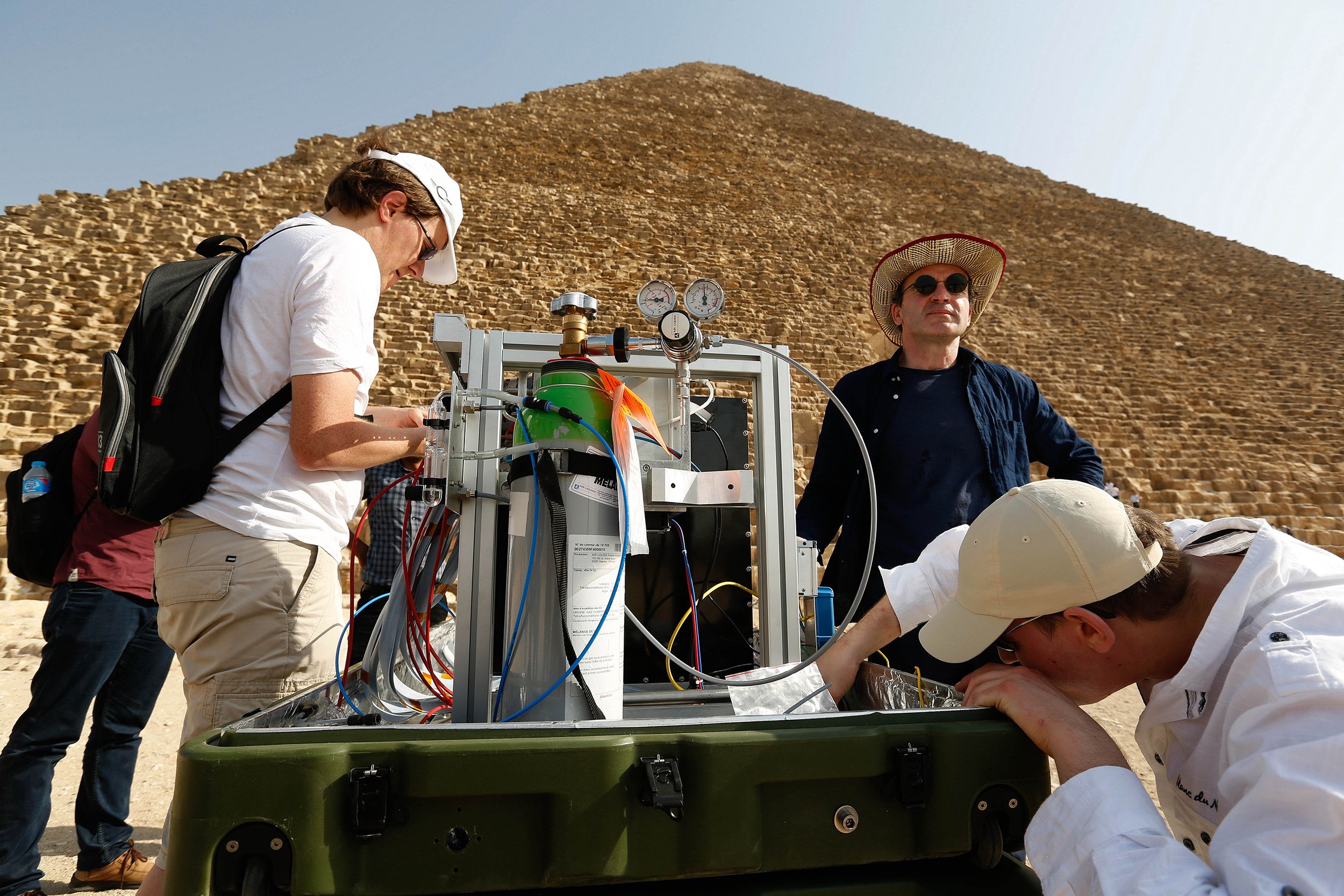
Using advanced scanning technologies, scientists in Egypt have discovered a hidden tunnel that runs underneath the Great Pyramid of Giza, the largest stone structure of its kind and the oldest of the Seven Wonders of the Ancient World.
The corridor, which measures 30 feet long, is located near the main entrance on the northern face of the 4,600-year-old pyramid, though researchers have yet to pinpoint its actual function. Still, that’s not stopped Egyptian officials from touting the find as “the most important in the 21st century.”
The discovery of the tunnel was made by ScanPyramids, a cross-continental initiative begun in 2015 to examine the Egyptian pyramids using non-invasive techniques, including ground-penetrating radar and ultrasonic testing, with the endorsement of the country’s Ministry of Antiquities. In 2017, the team logged the notable discovery in 2017 of a large void above the Grand Gallery of the Pyramid of Giza, which it detected using cosmic ray muon radiology.
An endoscopic image of the tunnel discovered under the Great Pyramid of Giza. Photo courtesy of ScanPyramids.
It’s this same technology that uncovered this latest tunnel dubbed the “Gamalouni corridor.” Muon tomography can produce 3D images of volumes by recording the absorption of muons, subatomic particles created through interactions with cosmic rays. The technique is far more penetrating than x-rays as it can discern particle tracks through denser regions.
To conduct their radiology and imaging work, the ScanPyramids scientists inserted a telescope at an opening at one of the entrances of the pyramid, picking up what they described, in a paper in Nature, as “a rectangular cuboid.”
“This revealed the very first images of what turned out to be not only a void or a cavity but an unforeseen architectural structure,” said the team in a statement, adding that the space was also topped by a gabled roof that follows the slope of the pyramid’s chevrons.
The muon telescope observing the tunnel inside the pyramid. Photo courtesy of ScanPyramids.
Constructed around 2,560 B.C.E. in a project that was estimated to have quarried about 2.3 million massive stone blocks, the Great Pyramid of Giza has been linked to the Egyptian monarch Khufu, whose family and court members are buried in satellite pyramids and cemeteries in the vicinity.
For 3,800 years, the Khufu pyramid stood as the tallest manmade structure in the world at its height of 479 feet, until it was unseated by the Eiffel Tower in 1889. Some 14 million tourists continue to visit the site each year.
The pyramid currently houses three known chambers: the King’s Chamber, the Queen’s Chamber, and an unfinished one that was cut into the structure’s bedrock.
An artist’s rendition of the newly discovered tunnel. Photo courtesy of ScanPyramids.
According to Mostafa Waziri, who heads Egypt’s Supreme Council of Archeology, the newly discovered tunnel could have been dug to redistribute the weight of the pyramid. He pointed to similar existing corridors within the pyramid, such as those in Khufu’s burial chamber, which houses five rooms to relieve load pressure. Just as likely, he added, the tunnel could lead to other still-unknown chambers.
“We’re going to continue our scanning so we will see what we can do,” he said, “to figure out what we can find beneath it, or just by the end of this corridor.”
More Trending Stories:
Which A-List Art Power Couple Was Behind That Absurd, Now-Viral Ad for an Assistant? We Found Out